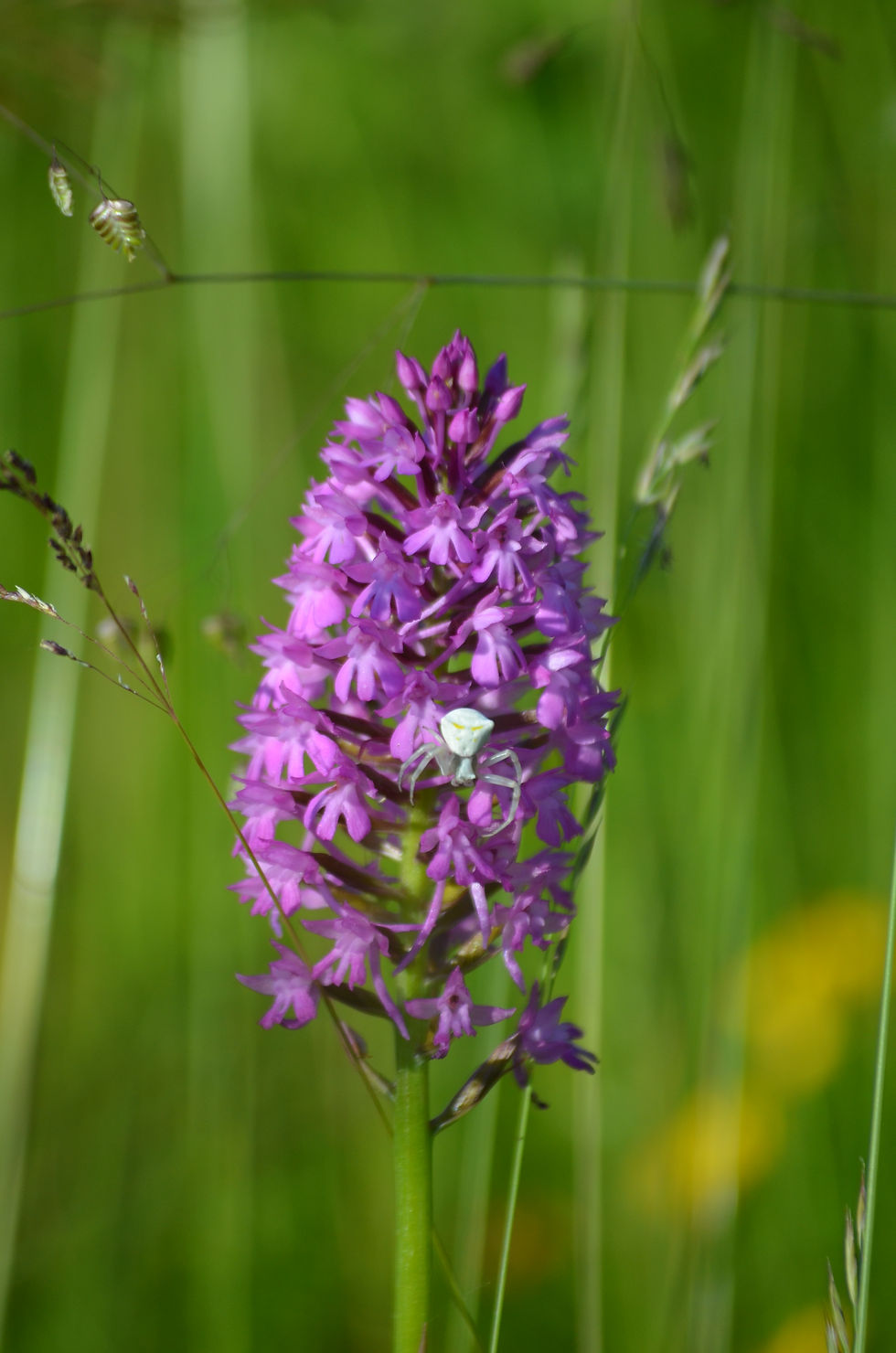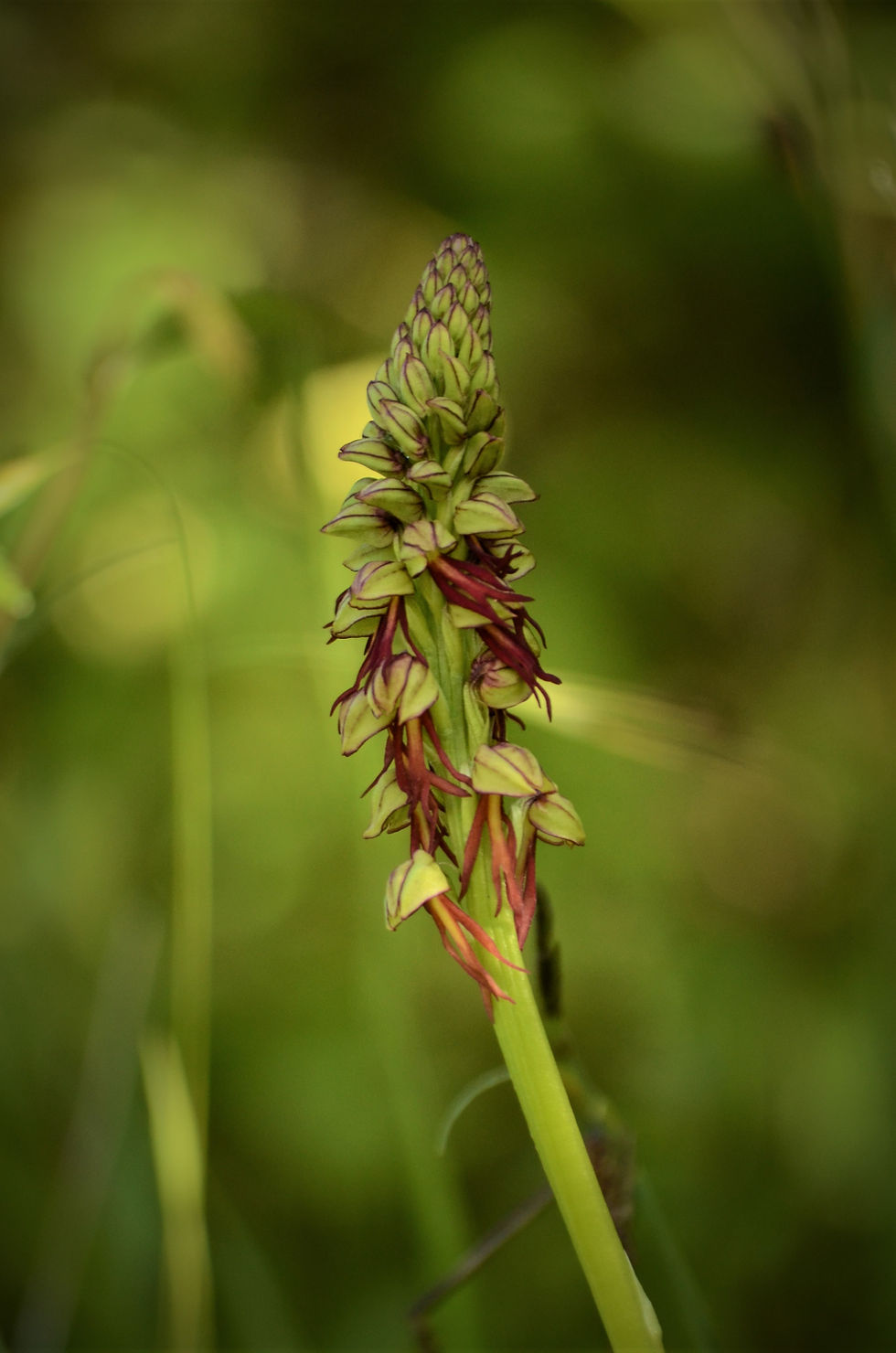Business is Blooming!
- Chris
- Jun 27, 2021
- 4 min read
Orchids - The flowers that provide even more encouragement for the future prospects of the truffière at Le Haut Repaire.
As spring turns to summer here in the Périgord, a truly amazing transformation takes place. Everywhere goes green - seriously green! After the oaks have come into leaf it is clear that winter has been defeated. However, it is as the walnuts finally burst that one must reach for the sunglasses to avoid being dazzled by the obscene lusciousness. The various wild flowers each take it in turn to show their colours. My opinion of the humble dandelion has completely changed since moving here. Back in the UK I would be reaching for the ‘weed wand’ at the sight of this naughty little weed. However, when faced with a walnut grove completely carpeted with yellow on account of millions of theses flowers you can’t help but be amazed. We often refer to this land as ‘Eden’ as it is just incredible how well everything grows here, including the grass!
As the summer solstice arrives, it is time for a more delicate family of plants to have their time in the spotlight. The orchids. Terrestrial orchids are under strict species protection because there existence in the wild is at great risk. Luckily for us, our truffière is brimming with them. The nutrient poor, calcareous grasslands of dry pasture offer the perfect environment for this quite magical species to flourish. The excellent drainage of the soil and lack of fertility means that the grass naturally struggles to grow here and gives a different group of animals, insects and plants the opportunity to thrive. But this is a truffière. Why do we care that it is filled with thousands of rare and beautiful flowers? Because, interestingly, the presence of the orchids provides us with even more evidence that is a truly fantastic spot to cultivate truffles as they both thrive in the same conditions. Aside from the ‘brûles’ that start to form around the bases of the inoculated trees, we have another indicator above the soil of what is most likely happening beneath the soil. Although most of these orchids are unscented, they certainly provide a wonderful whiff of what the future of this field holds.
And now, it is time for the show. A full colour HD rendition of some of the orchids living in the truffière right now. I truly hope you like them as much as I do. There are many others too that are not listed below but they will have to wait for another time. Many of the pictures have been taken by Danny, our eldest son (5 years old) as part of a local orchid photography competition (which we still eagerly await the results of!). For those that would love to see them for yourself please note that the best time to see orchids here is between mid May and mid June. Come stay with us, enjoy everything ‘Le Haut Repaire’ and the surrounding area has to offer. Of course, remember that if you have adopted a tree then you get a 10% discount off the numerous accommodations available here.

I clearly remember seeing my first Bee orchid (Ophrys apifera) as a child in a meadow near my parents house in Gloucestershire. Around 30 years later, I failed to spot one again in that place. This photo was taken a few weeks ago near the top of the truffière. As you can see in the picture, there are quite a few. In fact, I suspect we have well over a thousand of these beautiful flowers.

A close up of the Bee orchid.

A currently unidentified bee orchid. Possibly a hybrid.

The fly orchid (Ophrys insectifera). Another flower that has evolved to attract pollinators by mimicking insects.

The Lady orchid (Orchis purpurea). We visit the same spot each year to observe this particularly large lady orchid. This one is around 18 inches tall.

The very delicate Marsh Helleborine (Epipactis palustris) in good numbers just below one of the natural springs near the truffière.

A veritable forest of Pyramid orchids (Anacamptis pyramidalis).

A close up of the Pyramid orchid with guest.

The very elegant Military orchid (Orchis militaris) standing proud and tall.

A Burnt-tip orchid (Neotinea ustulata).

Yet to be identified and photographed very recently. We seem to discover around 5 new orchids each year. An incredible environment.

Easy to miss amongst long grass, the Frog orchid (Dactylorhiza viridis) captured here shows its simple beauty and colours.

Possibly the star of the show, the Lizard orchid (Himantoglossum hircinum) is a remarkable orchid. Almost invisible in the longer grass next to the truffiere, this orchid is an amazing find. It stands at nearly a metre tall and has the most incredible composition. This species of orchid is very rare in the United Kingdom but, here in the Dordogne, many locals mow them down in search of the perfect lawn. It's a good job there are so many others growing nearby.

A close up showing us just how remarkable nature can be. The endless variety that Mother Earth can throw at us is incredible. The only question that remains is 'would you rather have a field full of orchids or a field full of truffles?'. Very luckily for us, we're looking forward to having both.
Please note: No orchids will be harmed in the making of this truffle enterprise. If an orchid falls in the ‘danger zone’ where the soil needs to be worked/aerated etc., then every attempt will be made to relocate it.

It's heartening to know there are still places in this densely populated planet where the native species have not yet been destroyed by modern agricultural methods. For so many stunning varieties of orchid to thrive it's clearly a very special environment, and you have the privilege - and responsibility! - to be its custodians. Make sure you continue to take good care if it.
These orchids are to be valued not just for their beauty but also for the wide variety of insects they support.
Your pictures are lovely. The lizard orchid is particularly unusual and impressive. And tell young Danny he certainly deserves a prize for his contributions!
For you, your family and your guests - treasure and enjoy.